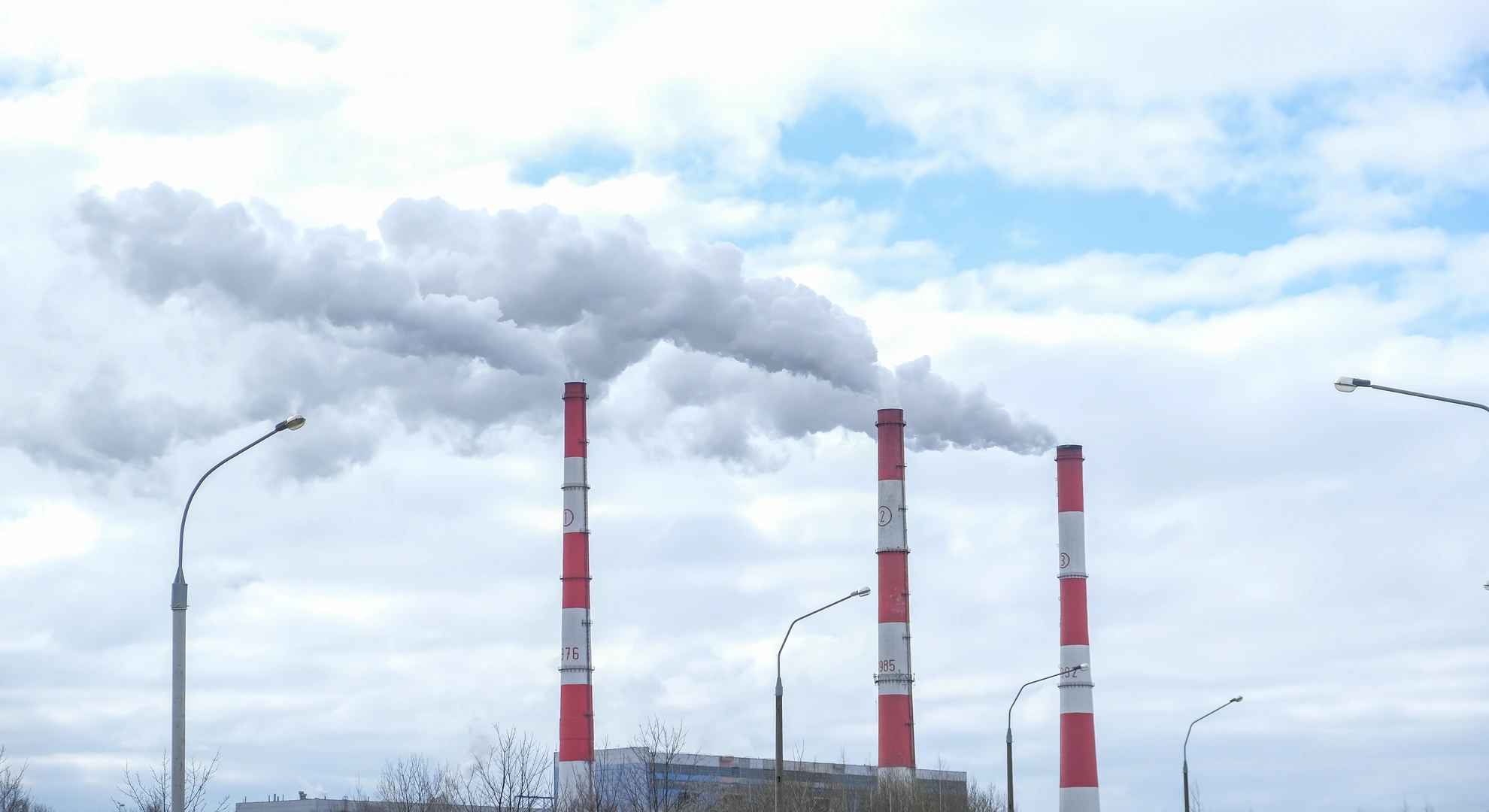Carbon dioxide, a fundamental element in Earth’s climate dynamics, plays a pivotal role. A comprehensive exploration of its influence on global temperatures, ocean acidity, melting ice caps, unpredictable weather patterns, and feedback loops sheds light on the urgency of addressing carbon dioxide emissions. The focus is on identifying sustainable solutions to promote a healthier and more sustainable planet.
Greenhouse Gas and Global Warming Potential
Let’s clarify the greenhouse effect to understand how carbon dioxide interacts with climate change. Certain gases in the atmosphere act like a blanket, capturing sunlight and warming the Earth’s surface. In this scenario, carbon dioxide takes center stage, absorbing and then redirecting infrared radiation, keeping the heat from escaping into space.
Historical Context
Carbon dioxide hung out at 280 parts per million Back in the day. Then, when we started going wild with fossil fuels in the late 1800s, CO2 levels shot past 400 ppm, bringing along warmer vibes globally.
CO2 Levels Over Time
Human Activities and Carbon Dioxide Emissions
Our deeds, like fossil fuel fiestas and forest frolics, are prime contributors to carbon dioxide emissions. Burning coal, oil, and gas belches out a carbon dioxide storm while deforestation throws off the balance by interrupting nature’s carbon dioxide-absorbing routine during photosynthesis. The result is an increase in carbon dioxide levels over the past century.
Impact on Global Temperatures
The rise in carbon dioxide levels coexists with a temperature tale. Over the past century, average global temperatures donned their upward gear, thanks to the greenhouse effect driven by carbon dioxide and its companions, global temperatures are on the rise. As carbon dioxide levels continue to increase, so does the overall temperature, marking the beginning of the climate change era.
Ocean Acidification
In the carbon dioxide narrative, an often overlooked aspect is ocean acidification. As oceans absorb carbon dioxide, a chemical process ensues, giving rise to carbonic acid. This acidic transformation adversely affects the coral reefs, mollusks, and certain planktonic species, disrupting entire ecosystems.
Melting Ice Caps and Rising Sea Levels
Rising temperatures give glaciers and polar ice caps a hotfoot, directly tied to the increased carbon dioxide in the atmosphere. The melting spectacle contributes to sea level acrobatics, putting coastal areas, islands, biodiversity, human homes, and cultural relics on the risk list.
Extreme Weather Events
Rising temperatures, a gift from increased carbon dioxide levels, kick up the frequency and intensity of storms, hurricanes, cyclones, droughts, heatwaves, and wildfires. These shindigs not only put lives and property on the line but also disrupt ecosystems, giving habitats and biodiversity a rollercoaster ride.
Feedback Loops
Carbon dioxide-induced climate change sets off a chain reaction, speeding up the overall process. Positive feedback mechanisms, like when extra greenhouse gases are released as permafrost thaws and ice reflects less sunlight, amplifying the initial warming caused by carbon dioxide. This interconnected cycle becomes increasingly challenging to address as it progresses, resembling a complex puzzle that’s difficult to solve once it gains momentum.
Mitigation Strategies
Switching to renewable energy like wind, solar, and hydropower gives us cleaner options than regular fossil fuels. Plus, planting more trees through afforestation and reforestation helps soak up carbon dioxide naturally, easing the rise in atmospheric levels.
Conclusion
The spotlight on addressing carbon dioxide emissions is no exaggeration. The surge in carbon dioxide levels is the conductor of climate change, shaping global temperatures, ocean health, ice cap dynamics, wild weather escapades, and triggering feedback loops. To ensure a balanced future, it’s crucial to adopt renewable energy, contribute to forest conservation, and collaboratively reduce carbon dioxide emissions. United, we strive for a healthier planet for both current and future generations. Let’s step onto the stage and craft a brighter future together.
Remember, in the face of climate change, we’re the maestros. With determination and unity, we can make a difference. The evidence is convincing, and the time to dance is now. Let’s dial down carbon dioxide emissions, safeguard our planetary dance floor, and craft a sustainable future for all.
FAQ
1. What is carbon dioxide, and why is it significant in climate change?
Carbon dioxide (CO2) is a greenhouse gas crucial for Earth’s climate dynamics. It plays a central role in trapping heat and influencing global temperatures.
2. How have human activities contributed to the rise in carbon dioxide levels?
Human activities such as burning fossil fuels (coal, oil, and gas) and deforestation release significant amounts of carbon dioxide into the atmosphere, elevating its levels.
3. What is the greenhouse effect, and how does carbon dioxide contribute to it?
The greenhouse effect is a natural process where certain gases, including carbon dioxide, trap heat in the Earth’s atmosphere. CO2 absorbs and redirects infrared radiation, preventing heat from escaping into space.
4. What is the historical context of carbon dioxide levels, and how have they changed over time?
Historically, CO2 levels were around 280 parts per million. However, due to increased fossil fuel use since the late 1800s, levels have surpassed 400 ppm, leading to global warming.
5. How does carbon dioxide impact global temperatures?
The rise in carbon dioxide levels correlates with an increase in global temperatures, primarily driven by the greenhouse effect. As CO2 levels rise, so does the overall temperature.
6. What is ocean acidification, and how is it connected to carbon dioxide?
Ocean acidification occurs when oceans absorb excess carbon dioxide, leading to the formation of carbonic acid. This process negatively affects marine ecosystems, including coral reefs and certain species.
7. How do melting ice caps and rising sea levels relate to carbon dioxide levels?
Increased carbon dioxide contributes to rising temperatures, accelerating the melting of glaciers and polar ice caps. This, in turn, leads to rising sea levels, posing risks to coastal areas and biodiversity.
8. How does carbon dioxide contribute to extreme weather events?
Elevated carbon dioxide levels intensify and increase the frequency of storms, hurricanes, droughts, heatwaves, and wildfires, posing threats to both lives and ecosystems.
9. What are feedback loops, and how do they amplify the effects of carbon dioxide-induced climate change?
Feedback loops are mechanisms that amplify climate change. For instance, thawing permafrost releases additional greenhouse gases, intensifying the initial warming caused by carbon dioxide.
10. What are effective mitigation strategies to reduce carbon dioxide emissions?
Mitigation strategies include transitioning to renewable energy sources (wind, solar, hydropower) and promoting afforestation and reforestation to naturally absorb carbon dioxide, mitigating its atmospheric levels.
Case Studies
- Emissions from the industrial sector in China (Zhang et al., 2020)
- Heatwaves in Europe (Schär et al., 2004)
- Effects on coral reefs in the Great Barrier Reef (Hoegh-Guldberg et al., 2007)
- Antarctic ice loss (Shepherd et al., 2018)
- Hurricane Harvey and climate change attribution (Emanuel, 2017)
- Permafrost thaw and methane release (Schuur et al., 2015)

